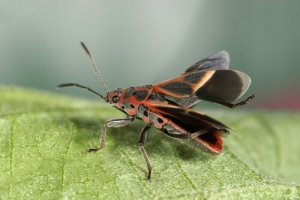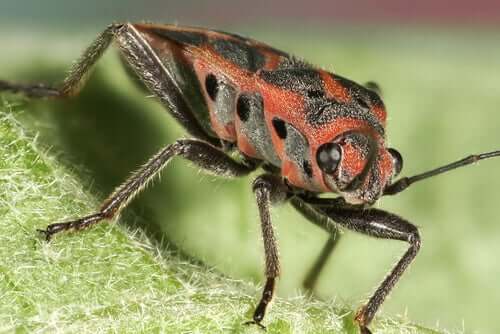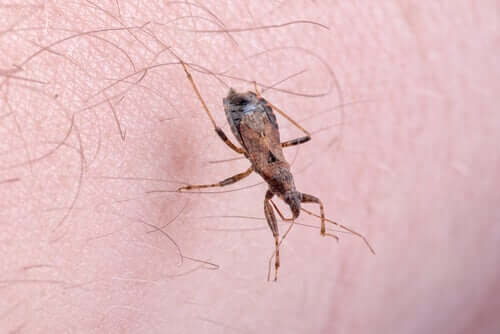The Kissing Bug and Chagas Disease

Chagas disease is a condition that mostly affects people in rural areas of Central and South America. It’s almost entirely caused by a tiny little insect: the kissing bug.
Also known as the “barber bug” and the “winchuka,” the kissing bug has lots of colloquial names depending on what region you’re in. They tend to bite people on the neck or face, hence the references to kissing and barbers.
When a kissing bug bites you, it generally leaves traces of infected feces that can get into your body when you itch it, touch your eyes, or just have a cut on your skin.
How does a kissing bug give you Chagas disease?
The reason a bite from these bugs can infect you is that they have a parasitic microorganism called Trypanosoma cruzi in their feces. Like we mentioned above, when this bug bites you, it will also defecate in the same area that it’s biting.

A kissing bug needs about 20 minutes for an effective bite. That’s nearly impossible during the day, when you’re moving around. So, they take advantage of the nighttime to attack you while you’re asleep.
The big problem with them is that because they bite your face, it’s much likelier for you to infect yourself. It’s an area you probably itch frequently, so you end up spreading the feces around the bite without realizing it. You can also contract the disease if you touch your eyes or nose while your hands have traces of the feces on them.
The other animals commonly infected by kissing bugs are birds. They’re also one of the main ways it gets into cities. Nobody will be surprised to hear that the disease is most common in pigeons, and it’s rare to see a city without thousands of them in the sky and on the street.
Symptoms of Chagas disease
This is an easy condition to treat. The initial symptoms are generally things like fever, vomiting, soreness, diarrhea, rash, swollen eyelids, or pain in parts of your body like the head and neck.

If you treat it in time, those symptoms will be the only consequences. On the other hand, if you don’t, the condition could get more serious. Some people end up having heart palpitations that have lead to sudden death. There’s also an increased likelihood of stroke, heart failure, or digestive problems and a serious case of constipation.
But the symptoms are so common that the best way to diagnose this condition is blood tests. If you end up having it, a doctor may also do some tests on your organs to make sure they’re fine.
How can you prevent it?
There’s currently no medicine or vaccine that can prevent you from getting Chagas disease. The only thing you can do if you go to Latin America is to avoid sleeping out in the open, or in a building with a straw roof.
The other good option is to use insect repellents, especially when you go to bed. Like we said earlier, that’s when the kissing bug tends to bite. If you find yourself with a bite on the face, and think it could be from a kissing bug, you should go to a doctor to be sure.
Other ways you can get Chagas disease
Besides a kissing bug bite, there are a few other ways this disease can be transmitted. For example, a mother may pass it to a child during pregnancy. It can also happen with blood transfusions (if their blood has the parasite in it), or orally. Still, the most common and most dangerous form of transmission is a kissing bug bite.
Chagas disease is a condition that mostly affects people in rural areas of Central and South America. It’s almost entirely caused by a tiny little insect: the kissing bug.
Also known as the “barber bug” and the “winchuka,” the kissing bug has lots of colloquial names depending on what region you’re in. They tend to bite people on the neck or face, hence the references to kissing and barbers.
When a kissing bug bites you, it generally leaves traces of infected feces that can get into your body when you itch it, touch your eyes, or just have a cut on your skin.
How does a kissing bug give you Chagas disease?
The reason a bite from these bugs can infect you is that they have a parasitic microorganism called Trypanosoma cruzi in their feces. Like we mentioned above, when this bug bites you, it will also defecate in the same area that it’s biting.

A kissing bug needs about 20 minutes for an effective bite. That’s nearly impossible during the day, when you’re moving around. So, they take advantage of the nighttime to attack you while you’re asleep.
The big problem with them is that because they bite your face, it’s much likelier for you to infect yourself. It’s an area you probably itch frequently, so you end up spreading the feces around the bite without realizing it. You can also contract the disease if you touch your eyes or nose while your hands have traces of the feces on them.
The other animals commonly infected by kissing bugs are birds. They’re also one of the main ways it gets into cities. Nobody will be surprised to hear that the disease is most common in pigeons, and it’s rare to see a city without thousands of them in the sky and on the street.
Symptoms of Chagas disease
This is an easy condition to treat. The initial symptoms are generally things like fever, vomiting, soreness, diarrhea, rash, swollen eyelids, or pain in parts of your body like the head and neck.

If you treat it in time, those symptoms will be the only consequences. On the other hand, if you don’t, the condition could get more serious. Some people end up having heart palpitations that have lead to sudden death. There’s also an increased likelihood of stroke, heart failure, or digestive problems and a serious case of constipation.
But the symptoms are so common that the best way to diagnose this condition is blood tests. If you end up having it, a doctor may also do some tests on your organs to make sure they’re fine.
How can you prevent it?
There’s currently no medicine or vaccine that can prevent you from getting Chagas disease. The only thing you can do if you go to Latin America is to avoid sleeping out in the open, or in a building with a straw roof.
The other good option is to use insect repellents, especially when you go to bed. Like we said earlier, that’s when the kissing bug tends to bite. If you find yourself with a bite on the face, and think it could be from a kissing bug, you should go to a doctor to be sure.
Other ways you can get Chagas disease
Besides a kissing bug bite, there are a few other ways this disease can be transmitted. For example, a mother may pass it to a child during pregnancy. It can also happen with blood transfusions (if their blood has the parasite in it), or orally. Still, the most common and most dangerous form of transmission is a kissing bug bite.
All cited sources were thoroughly reviewed by our team to ensure their quality, reliability, currency, and validity. The bibliography of this article was considered reliable and of academic or scientific accuracy.
Unidiversidad.Vinchucas: Cómo combatir al vehículo del mal de Chagas. 5 enero 2018.
- unidiversidad.com.ar/vinchucas-en-el-centro
Medlineplus. Enfermedad de Chagas. 29 mayo 2019.
- medlineplus.gov/spanish/chagasdisease.html
Infochagas. Lo que hay que saber sobre la enfermedad de Chagas.
- infochagas.org/que-es
This text is provided for informational purposes only and does not replace consultation with a professional. If in doubt, consult your specialist.








